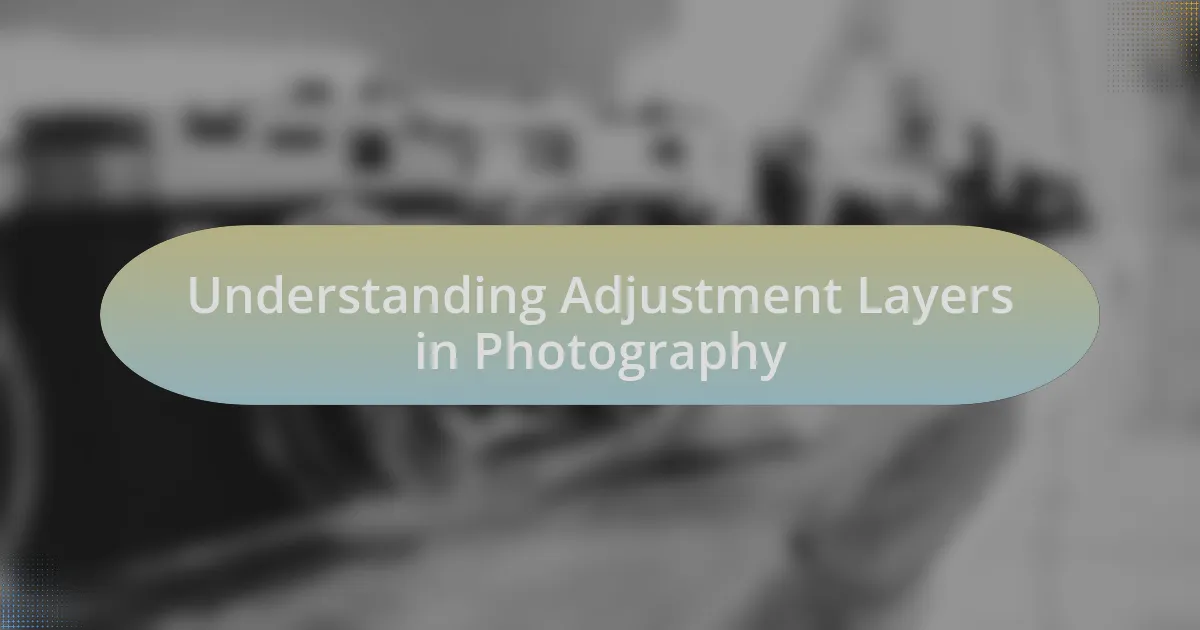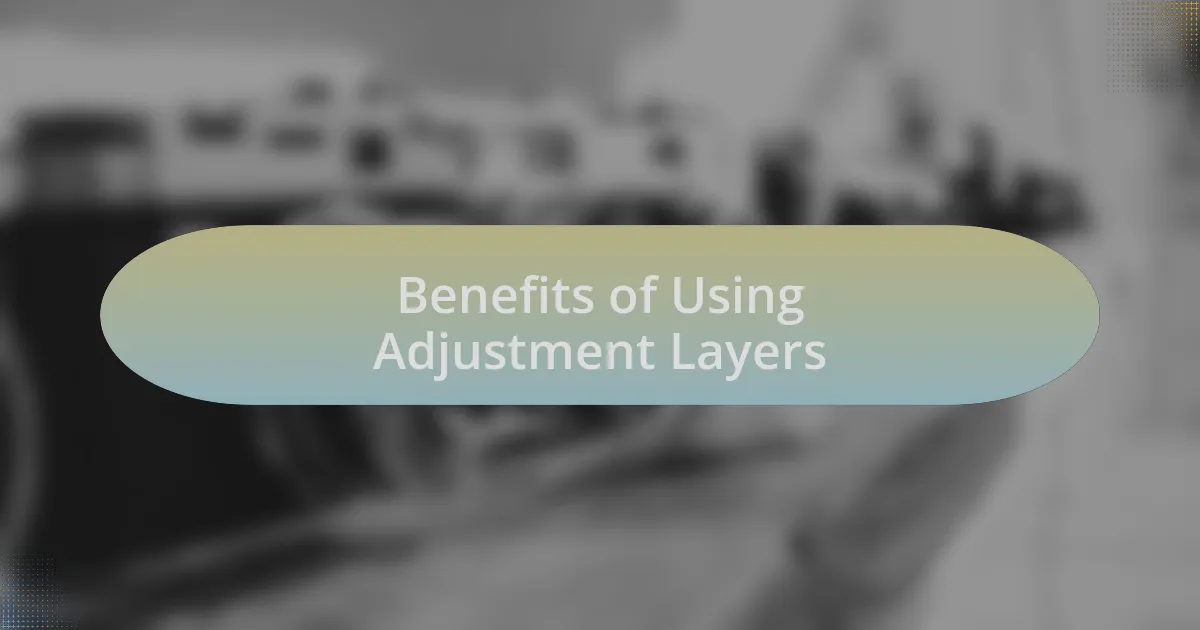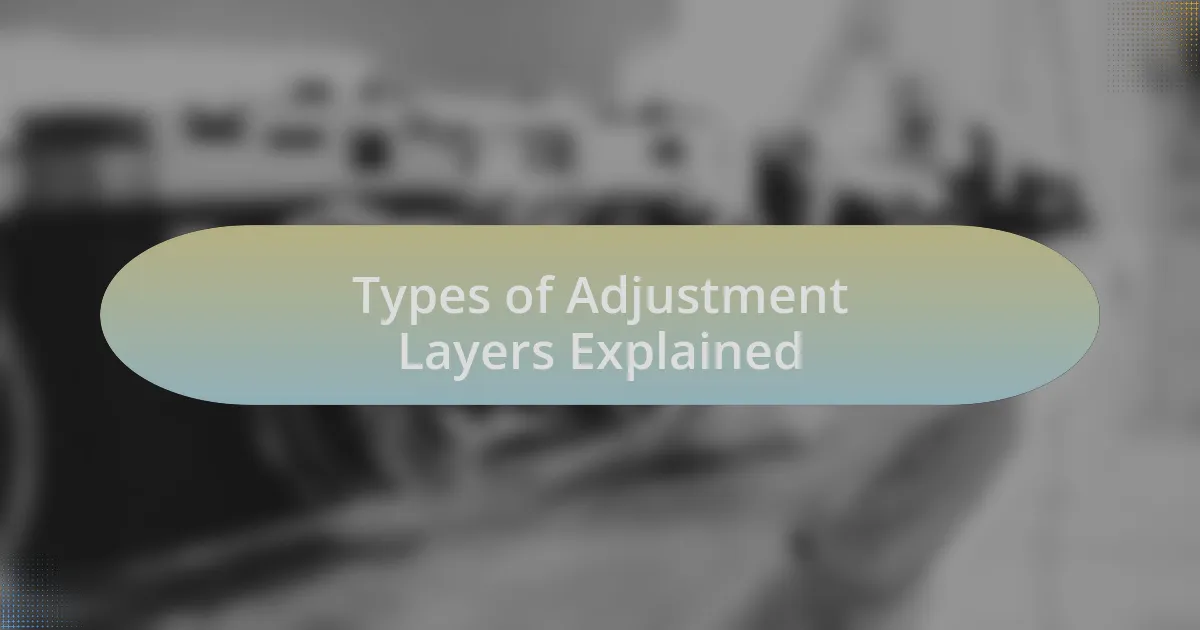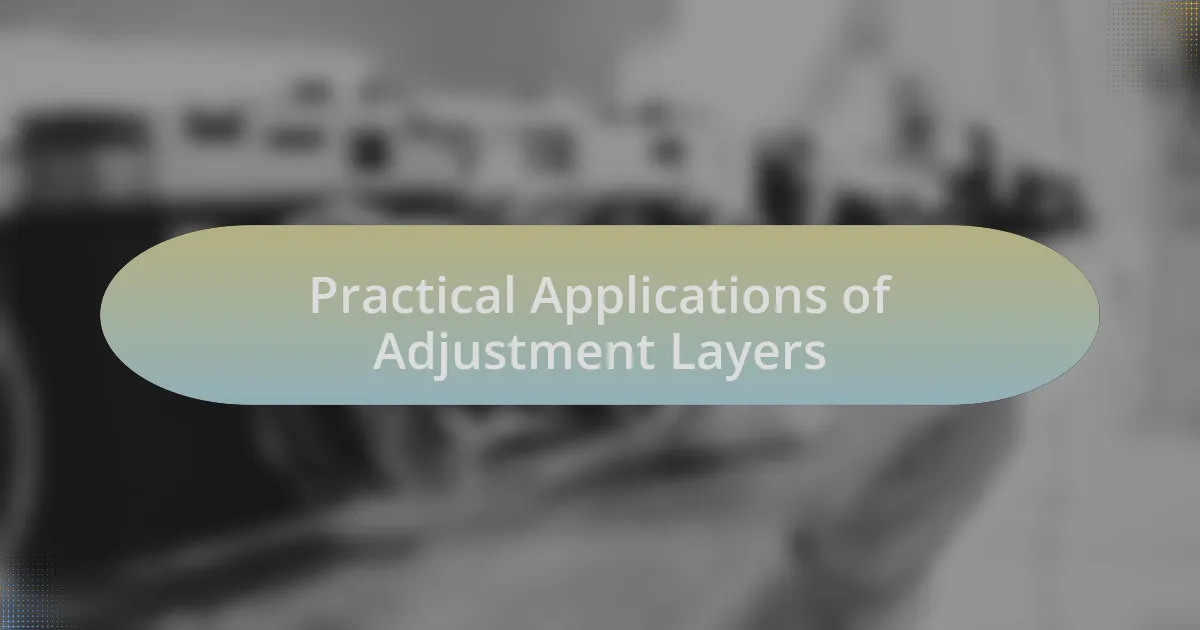Key takeaways:
- Adjustment layers enable non-destructive editing, allowing photographers to experiment and tweak images without altering the original file.
- Different types of adjustment layers, such as Curves, Hue/Saturation, and Levels, serve unique purposes, enhancing tonal range, color balance, and exposure.
- Using multiple adjustment layers can refine an image while keeping the workflow organized and efficient, enabling focused editing on specific elements.
- Practical applications of adjustment layers, like Color Balance and Brightness/Contrast, help convey moods and enhance the emotional impact of photography.

Understanding Adjustment Layers in Photography
Adjustment layers are an incredible tool in photography editing that allow me to make non-destructive changes to my images. For instance, when I’m working on a landscape shot, I might use a Curves adjustment layer to enhance the contrast. The beauty of this approach is that I can tweak the adjustment later without affecting the original photo—it’s like having a safety net that encourages experimentation.
I remember one particular instance when I was editing a portrait. I applied a Hue/Saturation adjustment layer to enhance the model’s eye color. The initial result was striking, but I tweaked the layer a few times to achieve just the right balance. Have you ever felt that sense of discovery when you’re adjusting elements and suddenly see your vision come to life? It’s one of the most fulfilling experiences in photography.
Using adjustment layers isn’t just about technical edits; it’s also about conveying a mood or story in my images. I often experiment with Color Balance layers to infuse warmth into my sunset shots. This thoughtful approach not only elevates the visual quality of my work but also deepens the emotional impact. Have you found that small adjustments can completely transform your images? I certainly have! Each layer can tell a part of the story, and that’s the magic of mastering adjustment layers.

Benefits of Using Adjustment Layers
Adjustment layers offer remarkable flexibility in photography editing, allowing me to experiment without fear of permanent changes. I once tackled a vibrant cityscape and used a Brightness/Contrast adjustment layer. When I made a bold change, it brought certain elements to life, making the city feel more dynamic. Isn’t it amazing how such subtle tweaks can drastically alter the viewer’s perception?
One key benefit is the ability to stack multiple adjustments to refine a single image. For instance, while editing a winter scene, I layered several effects—each adding depth and character. It was thrilling to watch the scene evolve, and I loved knowing I could revert or fine-tune any of those layers. Have you ever experienced that satisfying moment when everything just clicks into place?
Moreover, adjustment layers keep my workflow organized and efficient. During a recent project, I applied multiple layers for different elements of an image—sky, foreground, and subject. This not only made it easy to focus on specific areas but also allowed me to maintain a cohesive look. Isn’t it comforting to know that, with a few clicks, you can achieve such precision? Each adjustment layer adds a new dimension to my creative process.

Types of Adjustment Layers Explained
Adjustment layers come in various types, each serving a unique purpose in the editing process. For instance, the Curves adjustment layer allows me to manipulate tonal ranges in a photo. I remember working on a portrait where enhancing the mid-tones with Curves gave it a subtle yet impactful lift, bringing warmth to the subject’s skin. Have you ever felt that a small change can completely redefine the mood of an image?
Another fundamental type is the Hue/Saturation layer, which I frequently use to tweak colors without affecting the overall image quality. I once had a landscape shot where the greens were too vibrant, so I dialed back the saturation just enough to balance the scene. It’s fascinating how those slight nudges can harmonize the entire color palette of a photograph!
Lastly, Levels adjustment layers play a vital role in achieving a balanced exposure. When I’m working with high-contrast images, using Levels helps me pinpoint the darkest and lightest points. There was a time when I was editing a dramatic sunset, and adjusting the Levels created a richer blend of colors that truly captured the moment. Have you ever seen an image transform before your eyes with just a few adjustments? It’s a rewarding part of the editing journey.

Practical Applications of Adjustment Layers
When it comes to practical applications, I often lean on the Color Balance adjustment layer for enhancing moods in my images. For instance, while editing a snowy mountain landscape, I found that shifting the balance towards cooler tones brought out the icy feel I wanted to convey. Isn’t it interesting how a simple tweak can transport viewers to a specific season or mood?
Another powerful tool in my editing arsenal is the Brightness/Contrast layer. I distinctly recall working on a cloudy day photograph where the scene appeared dull and lifeless. By subtly increasing the brightness and contrast, the image sprang to life, and I felt a real connection to the environment I wanted to portray. It’s moments like these that make you appreciate the impact of light in photography.
Finally, I often utilize the Exposure adjustment layer when I’m striving for a more refined finish in my photos. There was a memorable time I was editing a portrait in natural light, and I found that a slight increase in exposure helped to soften shadows on my subject’s face. Have you ever adjusted the exposure just right and felt that rush of satisfaction as the image transformed into something truly captivating? That’s the power of seeing through the lens with a keen eye for adjustments.